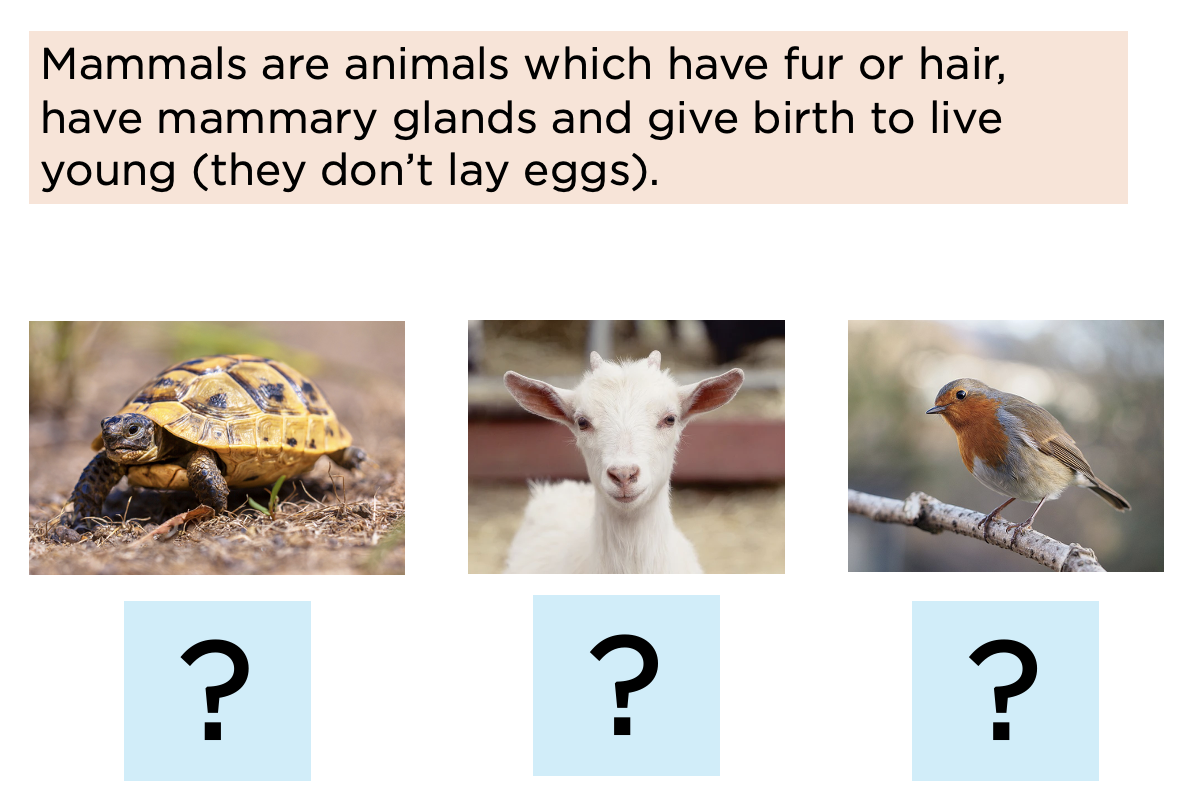Multiple Concrete Examples
With the technique, Multiple Concrete Examples:
You start by making a definition or concept clear…
Then you give at least two examples, making clear why these are examples…
Then you give at least one non-example, making clear why this isn’t an example (a non-example is something that doesn’t fit the definition, but could be confused as fitting it)…
Then you quiz students on a selection of mixed-up examples and non-examples, to check their understanding.
Why use this technique?
On their own, definitions and concepts can be difficult understand. Examples and non-examples help students to make sense of these. Non-examples can help make the limits of a definition clear.
Example 1
Imagine a class is being taught about mammals as part of a topic on vertebrates and invertebrates. The teacher explains the following definition:
Mammals are animals which have fur or hair, have mammary glands and give birth to live young (they don’t lay eggs).
They then explore two examples and one non-example, making clear why these fit or don’t fit the definition. For example:
Having done this, they quiz students to check their understanding. By doing so, students are required to consider further examples and non-examples.
The examples in this part of the learning sequence are carefully chosen to be relatively straightforward. The teacher is aiming to build motivation through the experience of success. For example:
Now, having had success with these, students move on to consider examples and non-examples that the teacher knows are more challenging. Deliberately, these are included later in the learning sequence. For example:
Finally, towards the end of the sequence, the teacher shares an exception to the rule:
Deliberately, this is towards the end of the learning sequence, to help avoid unnecessary confusion.
Example 2
An English teacher teaches students the definition of similes:
Similes are statements that compare things, using ‘like’ or ‘as’.
They then share two examples and one non-example:
Example 1 (using ‘like’)
They fought like cats and dogs.
Example 2 (using ‘like’)
She slept like a log.
Non-example (‘using like’)
I like ice-cream.
After this, they quiz students. This involves students trying to recognise different examples and non-examples, which get increasingly challenging.
Notes and tips
As a rule of thumb, aim to start with ‘straightforward examples’ and then introduce ‘tricky examples’ later in the learning sequence. This will help build motivation through the experience of success. If there are any exceptions to a rule, save these until last, to help avoid confusion.
Focused reflection
How well do you currently use this technique?
Is it a technique you will focus on developing?
If so, what are the key features you will focus on (things to do, and not do)?







